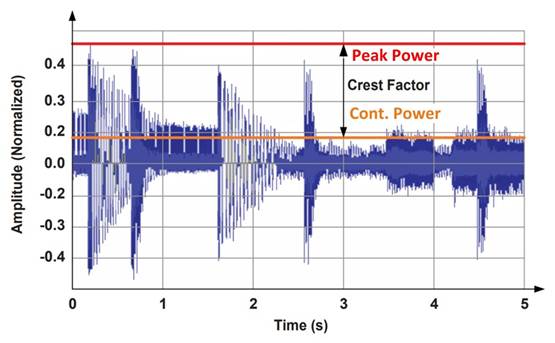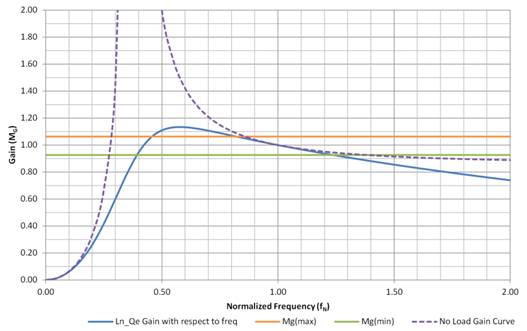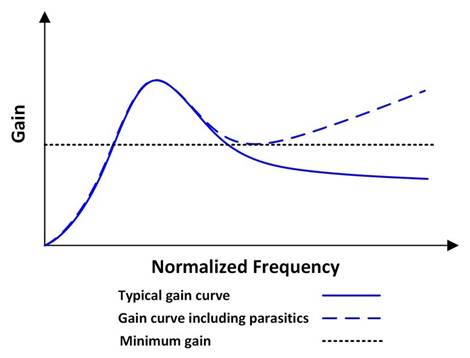Notes on LLC design of audio amplifier
Time:2023-03-15
Views:1170
Special consideration must be taken when designing the power supply for the audio amplifier. Compared with the standard isolated power supply, the nonlinear characteristics of audio signal bring different design challenges. This power tip covers the necessary knowledge for designing half-bridge LLC series resonant converter (HB LLC-SRC) for audio applications.


Audio power supply
One thing you find in the extensive field of electrical engineering is that different industries and even companies may use different languages to describe the same topic. For a successful design, power and audio engineers must understand each other.
The first two terms to be defined are peak power and continuous power. Peak power is ZD instantaneous audio power. It will determine how much power is designed for the physical output power supply. Continuous power is the average audio power over a period of time. In the context of power supply design, continuous power is the specified output power that the system can provide without exceeding the component temperature or average current rating. Figure 1 provides examples of peak and continuous audio levels. They are related to wave crest factor, which is a measure of the ratio of wave crest to root mean square (RMS) value.

Figure 1 This figure shows continuous and peak power audio levels.
It can also be expressed in decibels by the following equation:

Formula for calculating audio level
RMS is improperly used in terms of audio power, because this value is not technically the calculated RMS value of power waveform. You can write another article about how to specify the complexity of the audio amplifier. The industry standard for understanding the rated amplifier power level does not necessarily specify what the power requirements are in terms of peak and continuous power.
For example, consider the design of LLC series resonant converter (LLC-SRC) for 400W audio amplifier. Without prior knowledge of the audio system, you can design an excellent 400 W power supply. However, when the amplifier needs to be powered up, the power supply fails or the audio quality is poor. The gain curve of LLC converter is usually designed according to the ZD load and works near the series resonant frequency under the ZX line condition. This method usually produces a perfect 400-W LLC-SRC, but in the actual audio system, the peak power will actually be greater than the 400-W rating of the amplifier. Before starting power supply design, at least continuous power and peak power shall be specified.
For the 400 W amplifier example, the appropriate power level for consumer products to play compressed music can be 200 W continuous power and 800 W peak power for 15 milliseconds. This represents a peak factor of 12 dB, which is typical for processing music. Unprocessed audio is about 18-20 dB, and movie audio may be more than 20 dB. Finally, the ratio of peak power to continuous power depends on the specific application, so it is very important to clearly define these at the early stage of the design process. The duration requirements of different load levels also help to optimize the design. Remember, the efficiency of the audio amplifier needs to be considered, because there will be losses in the amplifier, which will lead to higher power load.
LLC-SRC design
After the specification is determined, you can continue to design the power supply. Depending on the regional and applied power quality standards, you may need a power factor correction (PFC) power supply to design this power level. The PFC front-end will provide a stable 400VDC bus as the input of LLC-SRC.
Like most resonant converters, the DY step of designing LLC-SRC is to select resonant circuit components. This will set the resonant frequency and shape the gain curve. In this step, ensure that the output voltage can reach the peak power level. If the resonance circuit cannot reach the required gain, the output voltage will drop at the audio peak, which will reduce the audio quality or turn off the amplifier. For the output capacitor, the peak power duration requirement is usually too long to maintain the output voltage, so the power supply needs to be able to actually provide the entire peak load.
Add some extra space on the peak gain. The physical limit of transformer structure does not always reach the exact number of turns or inductance. For audio design that needs to reach high peak power, it is beneficial to use discrete resonant inductor to ensure more JQ resonance and magnetizing inductance.
At peak power, it is important to select the components rated to handle peak current. When designing magnetic components, make sure they are not saturated. Under continuous power, it is important to select components and packages according to continuous thermal performance. Designers can reduce the size of some packages and use PCB for thermal management instead of heat sink.
Like any LLC-SRC, shaping the gain curve is an iterative process. It is a challenge to try to reach a specific operating frequency, resonant current and voltage and balance the design between peak and continuous power levels. When calculating, you need to adjust the magnetizing inductance, resonant inductance, turn ratio and resonant capacitance. 100 kHz is a common resonant frequency target for silicon-based design. For audio applications, it is significant that the target frequency of the continuous power operating point is 100 kHz. Figure 2 shows the gain curve for the above example. The operating frequency range is 83 – 139 kHz.



Figure 2 The gain curve is shaped for LLC-SRC design.
Burst mode
An important aspect of modern LLC-SRC design is to achieve burst mode operation with light load efficiency. Burst mode is also used to meet the industrial standby power supply regulations. When the burst packet frequency is within the range of audible noise, audible noise is a problem, but some LLC resonant controllers (such as UCC256404) use the burst mode control law to prevent the audible noise generated by the burst frequency. These are three methods and possible reasons for selecting them:
1. Enable burst mode: use burst mode to reduce standby power consumption without turning off the main output. The power supply will be provided to the amplifier immediately without delay due to power startup.
2. Disable burst mode: In standby mode, the converter needs to use standard switch operation to adjust the output. This will reduce the efficiency of light load, but it can reduce the complexity and further eliminate any audible noise problems, such as the influence of the parasitic effect of the secondary side rectifier on the gain curve. Figure 3 shows how the gain curve actually starts to rise at higher frequencies. If the ZX gain cannot be reached, the power supply will lose adjustment.

Figure 3 When the burst mode is disabled, the gain curve will start to rise at a higher frequency.
External controller disable: When the audio amplifier is not running, use the external disable circuit to turn off the controller. Compared with the burst mode, this further reduces the standby power consumption, but because the system now needs auxiliary power supply, it increases the cost. When the amplifier is ready to output audio, there will also be a start delay.
LLC-SRC is a high-performance topology suitable for continuous power range from 100 to 500 W. It is an excellent topology for AC-DC systems requiring high efficiency and ZX electromagnetic interference (EMI). Resonant converter design is challenging enough, even before it is applied to complex audio systems. The DY step is a mutual understanding between the power engineer and the audio engineer on the peak and continuous power level required by the amplifier. The above strategy is regarded as the starting point of successful LLC-SRC audio application design.
|
Disclaimer: This article is transferred from other platforms and does not represent the views and positions of this site. If there is any infringement or objection, please contact us to delete it. thank you! |











